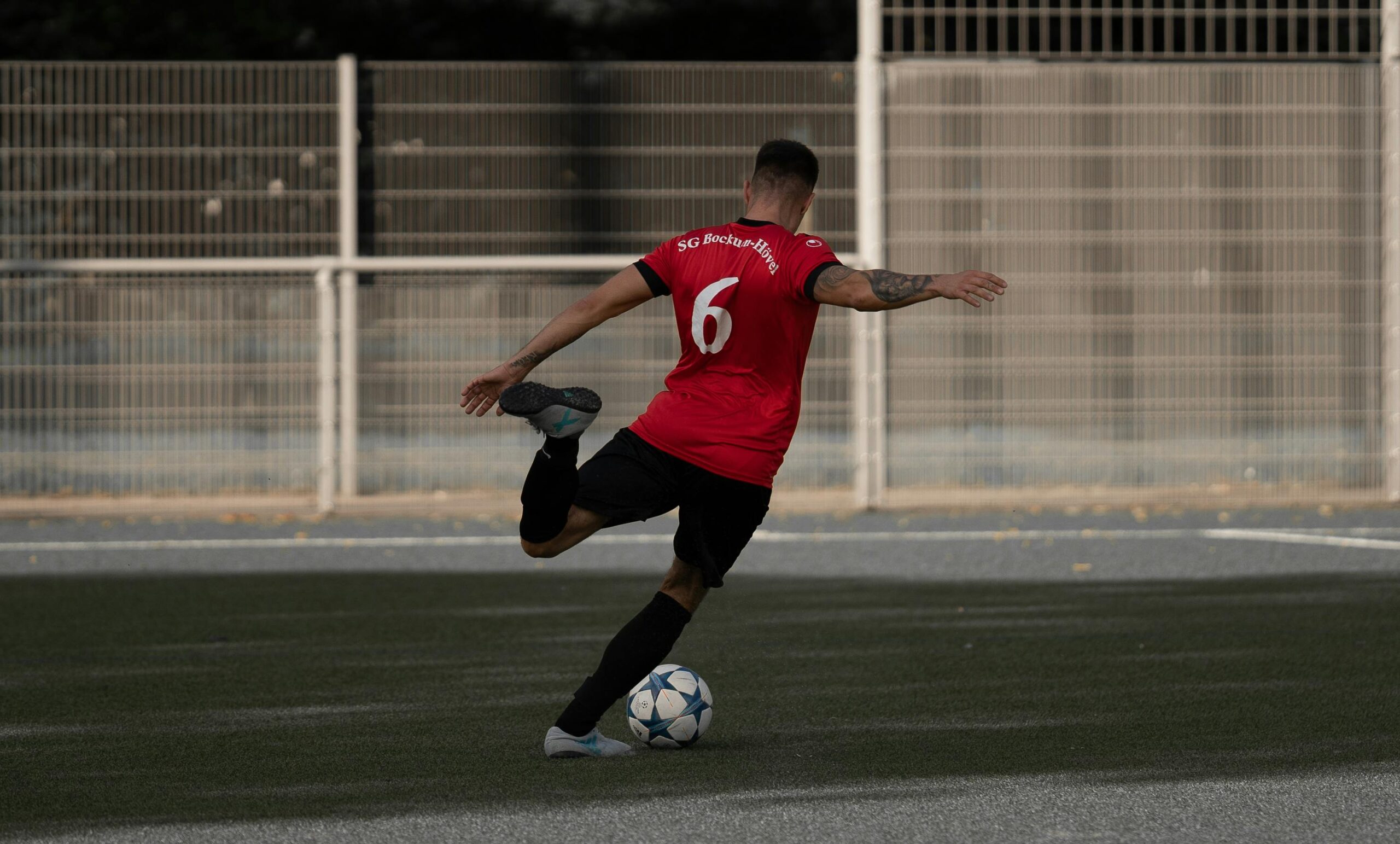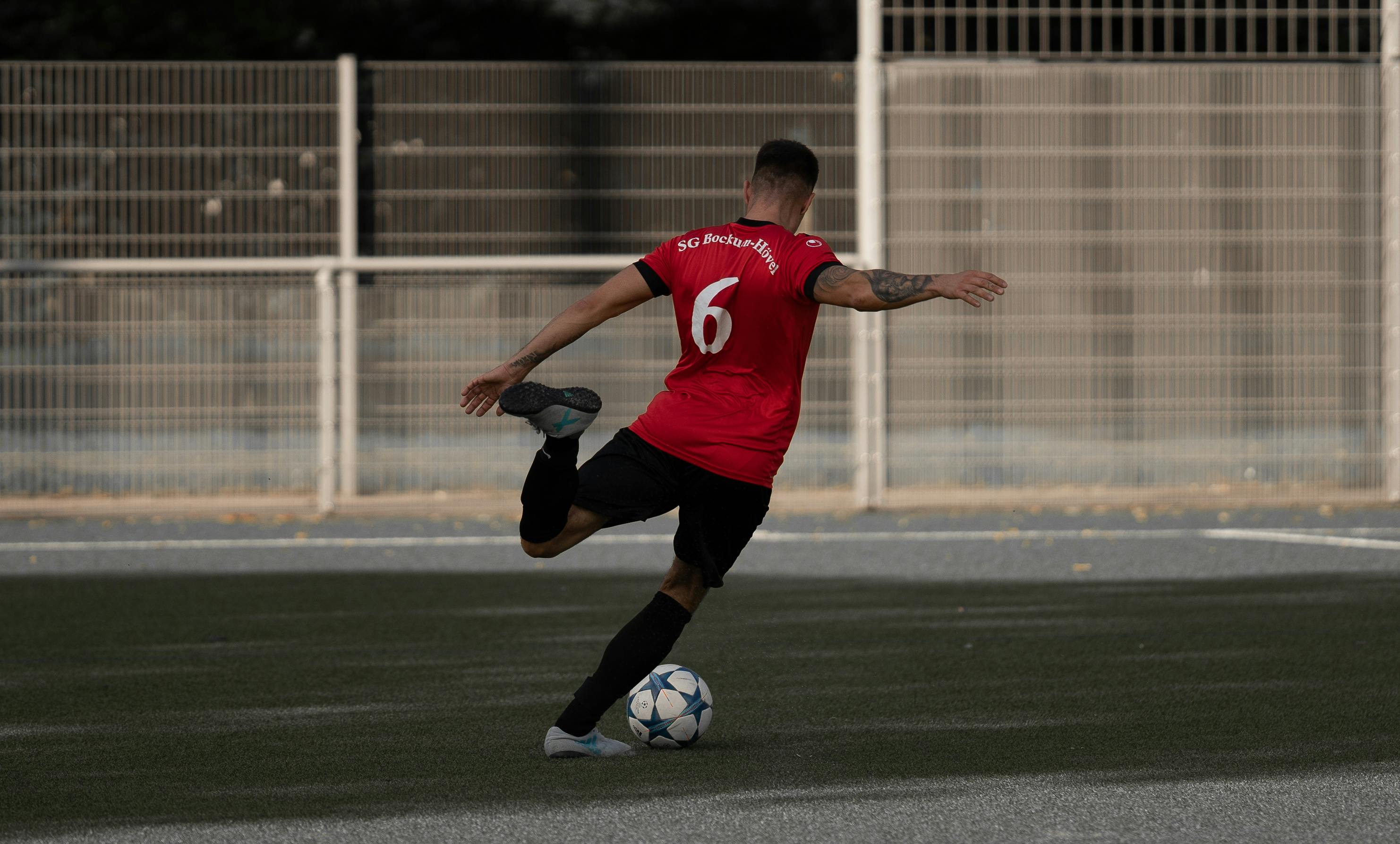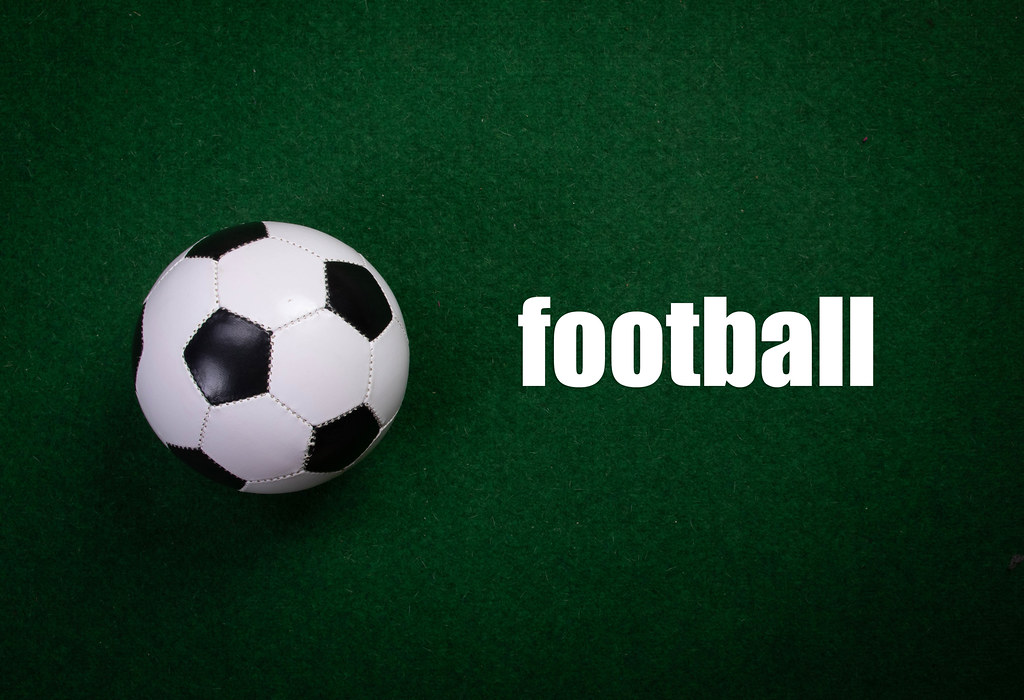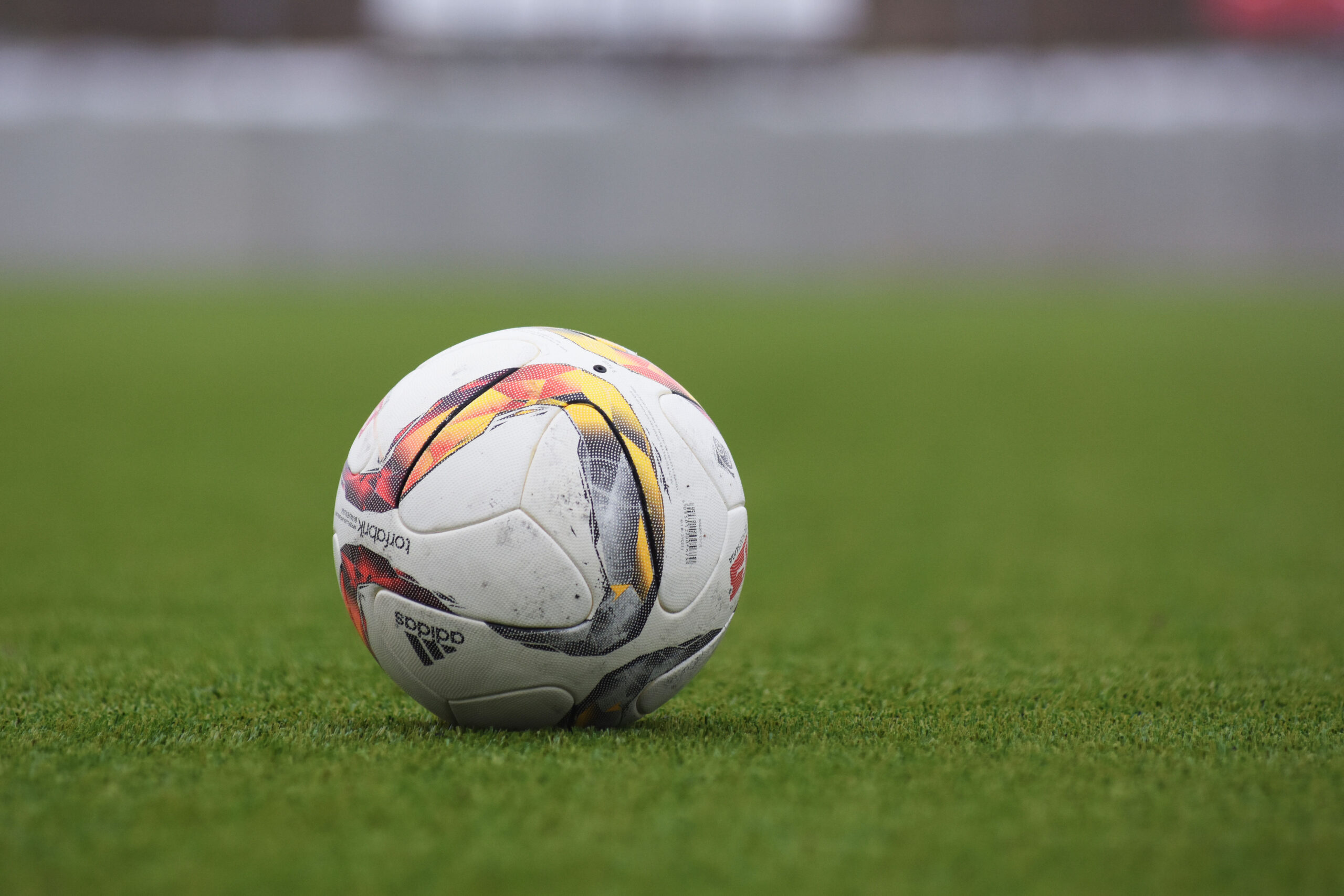How To Get Power When Kicking A Soccer Ball

Kicking a soccer ball with power is a skill that separates the amateurs from the professionals. It’s not just about how hard you can kick the ball, but also how effectively you generate that power. So, how do the pros do it? Let me tell you.
Power in a soccer kick comes from a combination of factors. First and foremost, it’s crucial to have proper technique. This involves striking the ball in the right spot with the right part of your foot. But technique alone is not enough. Building strength and explosive power in your lower body is essential. By working on exercises that target the muscles used in kicking, such as your quads, glutes, and core, you can enhance your power significantly. So, next time you step onto the field, remember that power comes from technique and strength, and with practice, you can kick like a pro.

Mastering the Art of Powerful Soccer Ball Kicks
When it comes to soccer, kicking the ball with power is a vital skill that can help you score goals and contribute to your team’s success on the field. However, generating power behind your kicks requires proper technique and training. In this guide, we will take you through the steps to help you enhance your kicking power and become a more formidable player. Whether you’re a beginner or an experienced player looking to improve, these tips will help you unleash powerful kicks with precision.
Step 1: Master Your Balance and Stance
Before you can generate power in your kicks, it’s essential to have a solid foundation with a balanced stance. Start by positioning yourself behind the ball, with your non-kicking foot slightly ahead of the ball and your toes pointing towards your target. Keep your knees slightly bent to maintain balance and stability. Distribute your weight evenly on both feet, ensuring that you’re not leaning too far forward or backward.
As you prepare to kick the ball, raise your non-kicking arm for balance and stability. Your kicking leg should be cocked back, ready to swing forward and make contact with the ball. Having a strong and balanced stance will help you maintain control and accuracy while generating maximum power in your kicks.
Remember, balance and proper stance are the foundation on which powerful soccer kicks are built. Practicing your balance and stance regularly will improve your overall kicking performance and prevent unnecessary injuries.
Foot Placement Matters
In addition to your overall balance and stance, proper foot placement is crucial for generating powerful kicks. For a dominant right-footed kick, plant your non-kicking foot slightly to the left of the ball, pointing towards your target. This positioning allows your kicking leg to swing freely and generate maximum force.
As you prepare to kick, focus on striking the ball with the area between your laces and the base of your big toe. This area provides better control and power, allowing you to maximize the force transferred to the ball. Practice your foot placement and aim for consistency to develop muscle memory and enhance your kicking power.
Additionally, ensure that your ankle is locked and your toe is pointed down at the moment of contact. This helps generate a solid and clean strike on the ball, increasing the power and accuracy of your kicks.
Step 2: Generate Whip-like Leg Speed
To achieve powerful kicks, it’s crucial to generate whip-like leg speed during the kicking motion. The faster your leg accelerates, the more power you can transfer to the ball. Here are some tips to enhance your leg speed:
- Focus on explosive leg movements by engaging your hamstring and quadriceps muscles.
- Drive your kicking leg forward using your hip flexors, allowing for a swift and powerful motion.
- As your leg swings forward, snap your knee and whip your foot towards the ball in one fluid motion.
- Practice kicking with a relaxed but controlled motion, as tension in your leg can hinder speed and power.
By incorporating these techniques into your training regimen and consistently practicing them, you’ll develop the ability to generate rapid leg speed and unleash powerful kicks.
Explosive Hip Rotation
One of the keys to generating leg speed and power is explosive hip rotation. As your kicking leg swings forward, initiate the movement from your hip, allowing your leg to follow through with force. Engage your core muscles to generate rotational power and transfer that energy into your kicks.
Imagine your hip as the axis of a powerful pendulum, with your leg as the weight. By maximizing the speed and range of motion in your hip rotation, you can amplify the power behind your kicks. Regularly practicing hip rotation exercises, such as twisting lunges or medicine ball rotations, can help you improve this aspect of your kicking technique.
Step 3: Develop Lower Body Strength and Explosiveness
To increase your kicking power, it’s essential to develop lower body strength and explosiveness. Strong legs and explosive muscles contribute to more forceful kicks. Here are a few exercises that can help you build lower body strength:
- Squats: Incorporate squats into your training routine to target your quadriceps, hamstrings, and glutes.
- Lunges: Perform various lunge variations to strengthen your legs, improve stability, and enhance explosive power.
- Calf Raises: Strengthen your calf muscles, which contribute to stability and balance during kicks.
- Plyometric Exercises: Include exercises like box jumps, explosive jumps, and bounding to develop explosive power in your legs.
Remember to consult with a fitness professional or coach who can guide you through these exercises to ensure proper form and prevent injuries. Regularly incorporating strength and explosive training into your soccer practice will lead to more power behind your kicks.
Core Strength for Stability
A strong core is essential for stability and balance during powerful kicks. Your core muscles stabilize your body and help transfer energy from your lower body to the ball. Incorporate exercises such as planks, Russian twists, and medicine ball exercises into your training routine to strengthen your core muscles.
Remember, a strong and stable core enables you to optimize your kicking power while maintaining control and balance on the field.
Step 4: Improve Technique through Repetition
Repetition is key when it comes to developing powerful kicking technique. Consistently practicing your kicks not only helps improve your muscle memory but also allows you to refine your technique. Here are a few tips to consider:
- Start with slow and controlled practice, focusing on proper form and technique.
- Gradually increase your speed and power as you become more comfortable with the movement.
- Work on accuracy by aiming for specific targets within the goal or setting up markers on the field.
- Practice different types of kicks, such as the instep drive, side volley, or knuckleball, to develop versatility in your power kicks.
By repeating these exercises and drills consistently, you’ll train your body to execute powerful kicks effectively and efficiently, enhancing your overall performance as a soccer player.
Step 5: Incorporate Plyometric Training
Plyometrics is a training method focused on explosive movements that can significantly improve your kicking power. Adding plyometric exercises to your training routine can help you develop explosive strength and speed in your leg muscles. Here are some examples of plyometric exercises for soccer players:
- Box Jumps: Jumping onto a sturdy box or platform and immediately jumping back down.
- Depth Jumps: Step off a box, land on the ground, and then explode vertically as soon as your feet touch the ground.
- Ankle Bounces: Rapidly bounce on the balls of your feet, focusing on quick and explosive movements.
- Single-Leg Bounds: Jump forward explosively on a single leg, landing on the opposite leg, and immediately jumping forward again.
Remember to warm up properly before engaging in plyometric exercises and consult with a fitness professional to determine the appropriate intensity and progression for your training.
By incorporating plyometric training into your routine, you’ll enhance your leg power, explosiveness, and overall kicking ability.
With consistent practice, focus, and dedication, you can improve your kicking power and become a force to be reckoned with on the soccer field. Remember to continuously work on your technique, strength, and speed to unlock your full potential as a powerful kicker. So, get out there, practice, and unleash your power!


Frequently Asked Questions
Are you looking to add more power to your soccer kicks? Here are some commonly asked questions about how to get power when kicking a soccer ball, along with expert answers to help you improve your game.
1. Why is power important in a soccer kick?
Power is an essential aspect of a soccer kick because it determines the speed and strength of the ball’s trajectory. The more power you generate, the harder it becomes for the goalkeeper to save your shot. Additionally, a powerful kick increases the chances of scoring goals and executing long-distance passes with accuracy.
To generate power in a soccer kick, you need to focus on techniques such as proper body positioning, leg swing, and follow-through. Developing power in your kicks will make you a more effective player on the field.
2. How can I generate more power in my soccer kicks?
There are several ways to generate more power in your soccer kicks:
First, start by developing your lower body strength through exercises such as squats, lunges, and calf raises. Building stronger leg muscles will provide a solid foundation for generating power in your kicks.
Next, work on your technique. Focus on hitting the ball with the area of your foot known as the instep, as this provides the most power and accuracy. Also, practice your timing and coordination to ensure a fluid motion from the approach to the follow-through.
Finally, generate power through proper body positioning. Keep your hips and shoulders aligned with the target, and transfer your weight to your striking leg as you make contact with the ball. This will enhance the force of your kick and maximize power.
3. How important is the follow-through for power in a kick?
The follow-through is crucial for generating power in a soccer kick. It involves the continuation of your kicking motion after making contact with the ball. A proper follow-through allows you to transfer maximum energy to the ball, resulting in a more powerful shot.
To perfect your follow-through, aim to swing your leg fully, extending it forward with momentum. Avoid stopping abruptly after kicking the ball. Instead, let your leg continue its motion until it naturally reaches a complete follow-through position. This will ensure that you’re harnessing your body’s potential power and transferring it to the ball.
4. Can the type of footwear affect the power of a soccer kick?
Yes, the type of footwear you use can have an impact on the power of your soccer kick. Choosing the right soccer cleats can provide you with better traction, stability, and support, ultimately leading to a more powerful kick.
Opt for cleats with a firm and slightly stiff soleplate. This helps to transfer the energy from your legs to the ground and, subsequently, to the ball. Additionally, ensure that the upper part of the cleat fits snugly around your foot to enhance control and accuracy.
5. Are there any specific drills or exercises to improve power in a soccer kick?
Yes, there are specific drills and exercises that you can incorporate into your training routine to improve the power of your soccer kicks:
– Weighted ball exercises: Practicing with a slightly heavier ball can help build both strength and power in your kicks.
– Resistance band exercises: Using resistance bands during kicking drills can provide added resistance, forcing your muscles to work harder and generating more power.
– Plyometric exercises: Incorporating jumping exercises, such as box jumps or plyometric lunges, can help develop explosive power in your legs, which translates to more powerful kicks.
Remember to always consult a trainer or coach to ensure proper technique and avoid injuries while performing these exercises.
HOW TO GET A HARDER SHOT | learn to shoot harder in football
To get power when kicking a soccer ball, there are a few key techniques to keep in mind. First, you want to make sure you plant your non-kicking foot next to the ball and point it in the direction you want the ball to go. This will help you generate more power and accuracy in your kick.
Next, focus on the placement of your striking foot. Aim to hit the ball with the laces of your shoe, as this will provide more surface area and force behind your kick. Additionally, make sure to follow through with your kick, extending your leg fully and using the momentum of your body to add power to the shot.


